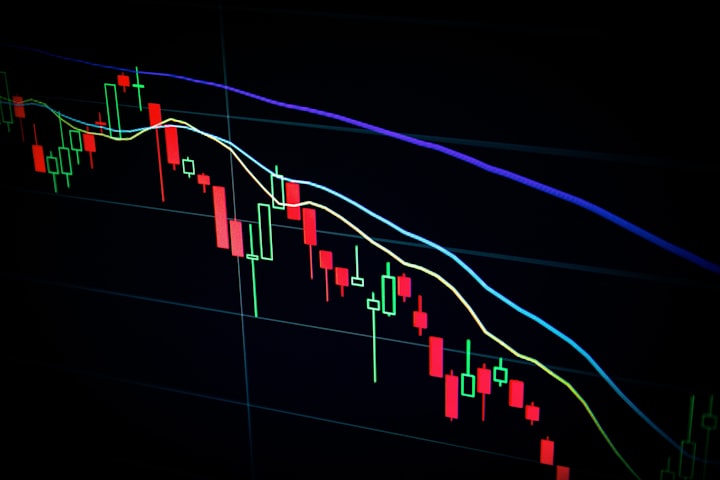Introduction to Trading
A Comprehensive Overview

Introduction
Trading is a dynamic and complex field that plays a vital role in global economies. It involves the buying and selling of financial instruments, such as stocks, bonds, commodities, and currencies, with the aim of generating profits. This essay provides a foundational understanding of trading, exploring its key concepts, participants, strategies, and the factors that influence market dynamics. By delving into the essentials of trading, readers will gain insight into this multifaceted discipline and its significance in the modern financial landscape.
I. Definition and Importance of Trading
Trading can be defined as the process of exchanging financial instruments between buyers and sellers in various markets. It facilitates price discovery, liquidity, and capital allocation, which are essential for economic growth. By connecting investors and allowing them to transfer risk, trading enhances market efficiency and provides opportunities for profit generation.
II. Participants in the Trading Process
Several key participants contribute to the trading ecosystem. They include individual traders, institutional investors, market makers, brokers, and exchanges. Individual traders can range from retail investors to professional day traders, while institutional investors, such as mutual funds and hedge funds, execute trades on a larger scale. Market makers provide liquidity by offering to buy or sell assets, ensuring continuous trading activity. Brokers act as intermediaries, facilitating transactions between buyers and sellers, while exchanges provide platforms where trading occurs.
III. Types of Trading Instruments
Various financial instruments are traded in global markets. Stocks represent ownership shares in companies, providing investors with voting rights and potential dividends. Bonds are debt instruments issued by governments or corporations, offering fixed income to investors. Commodities, including precious metals, agricultural products, and energy resources, are traded based on supply and demand fundamentals. Currencies, also known as foreign exchange (Forex), involve trading one currency for another in the global currency market.
IV. Fundamental Trading Concepts
Successful trading requires a grasp of fundamental concepts. These include understanding market participants' behavior, analyzing supply and demand dynamics, and evaluating market sentiment. Fundamental analysis involves examining economic indicators, financial statements, and geopolitical events to assess the intrinsic value of an asset. Technical analysis, on the other hand, involves studying price patterns, trends, and indicators to predict future price movements.
V. Trading Strategies
Traders employ a variety of strategies to navigate the markets. Some popular approaches include day trading, swing trading, trend following, and contrarian trading. Day traders aim to profit from short-term price fluctuations, often making multiple trades within a single day. Swing traders seek to capture medium-term price movements, holding positions for several days or weeks. Trend followers ride the momentum of established trends, aiming to enter and exit positions at optimal points. Contrarian traders, in contrast, take positions against prevailing market sentiment, anticipating reversals or corrections.
VI. Market Influences and Risk Management
Numerous factors impact financial markets, including economic indicators, geopolitical events, corporate earnings reports, and central bank policies. Traders need to stay informed about these influences to make informed decisions. Risk management is also crucial in trading, as it involves identifying and mitigating potential losses. Techniques such as setting stop-loss orders, diversifying portfolios, and managing position sizes can help traders protect their capital.
Conclusion
In conclusion, trading is a multifaceted discipline that encompasses a wide range of concepts, participants, instruments, strategies, and market influences. This essay has provided a comprehensive overview of trading, highlighting its definition, importance, and key components.
Trading serves a crucial role in global economies by facilitating the efficient allocation of capital, providing liquidity, and enabling price discovery. It connects investors with opportunities to generate profits, manage risk, and participate in the financial markets. The participants in the trading process, including individual traders, institutional investors, market makers, brokers, and exchanges, each play a significant role in the functioning of the trading ecosystem.
Various financial instruments are traded in global markets, such as stocks, bonds, commodities, and currencies. Understanding the characteristics and dynamics of these instruments is essential for making informed trading decisions. Additionally, traders need to be familiar with fundamental concepts like market behavior, supply and demand dynamics, and market sentiment. These concepts, along with fundamental and technical analysis techniques, provide a foundation for assessing the value and potential price movements of assets.
Trading strategies are diverse and tailored to different trading styles and market conditions. Day trading, swing trading, trend following, and contrarian trading are just a few examples of the many approaches traders may employ. The choice of strategy depends on factors such as time horizon, risk tolerance, and personal preferences.
Successful trading also requires a deep understanding of the various factors that influence financial markets, including economic indicators, geopolitical events, corporate earnings reports, and central bank policies. Staying informed and adapting to market influences is crucial for making sound trading decisions.
Risk management is another critical aspect of trading. By employing risk management techniques such as setting stop-loss orders, diversifying portfolios, and managing position sizes, traders can protect their capital and minimize potential losses.
In conclusion, while this essay has provided a comprehensive introduction to trading, it is important to acknowledge that successful trading requires continuous learning, practice, and adaptability. Traders must stay updated on market trends, continuously refine their strategies, and develop a disciplined approach to managing risks. By doing so, traders can navigate the complexities of the financial markets and strive for long-term profitability and success.
About the Creator
Ashok kumar
Amateur storyteller, you can expect me from all genres and also All sorts of stories: some funny, some sad, some a little motivational all of them told from the heart.
Thank you all for your support.






Comments
There are no comments for this story
Be the first to respond and start the conversation.